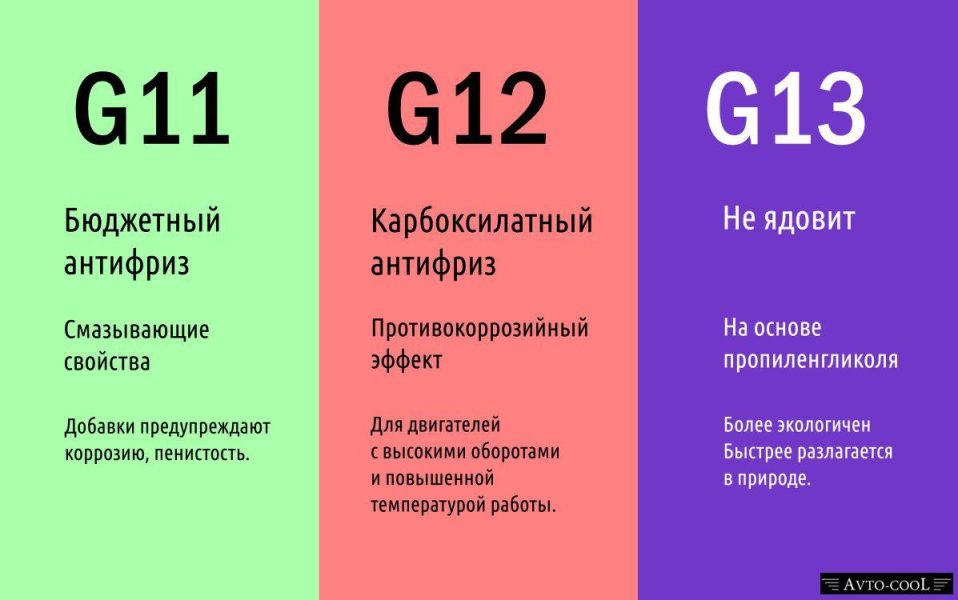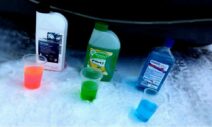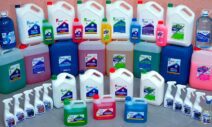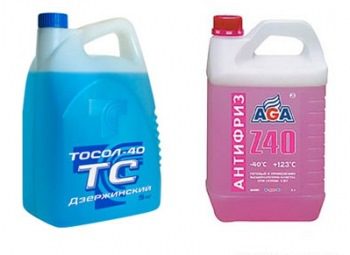
Can I mix different brands and colors of antifreeze
Content
Today, a huge variety of antifreezes of various colors and from different manufacturers are presented on store shelves. How do they differ and can antifreeze of different brands and colors be mixed? Let's answer this question.
Using antifreeze
Antifreeze is a special liquid designed to cool the motor of vehicles. Unlike water, which is used for the same purposes, antifreeze has stable performance properties. Among them, the most important is the ability to work with temperature extremes, which allows you to be confident even in winter.

Coolant manufacturers face many challenges. The main one is to ensure stable chemical properties, such as:
- guarantee against the formation of precipitates that do not dissolve;
- neutrality in relation to metal and rubber structures of the power unit and its cooling system.
These properties are ensured by adding an additive package.
Antifreeze from different manufacturers
Any antifreeze is needed to cool the engine both in warm and cold seasons, while the physical properties must remain unchanged. In addition to this criterion, he must meet others:
- effective work of additives with anti-corrosion properties;
- lack of foaming;
- no sediment during long-term operation.
These criteria distinguish antifreezes from each other. When manufacturing cars, the manufacturer usually takes all these properties into account and provides owners with recommendations on the choice and use of coolant.
Russian "Tosol" has a small amount of additives, as a result of which it has a high potential for foam formation. This means that it should not be used on turbocharged cars of foreign and domestic production.
Another criterion is the service life of the antifreeze. Most foreign manufacturers provide a resource for 110-140 thousand kilometers. Domestic "Tosol" has a service life of no more than sixty thousand.
All types of coolants, both expensive and cheap, are based on ethylene glycol. It has a low freezing point, which makes it possible to use liquids in the winter season. Ethylene glycol, when used without additives, causes rapid rust formation of metal parts inside the engine. The color will depend on the additive package.
Antifreeze color
Previously, antifreeze was distinguished only by its color; it can be green, red and blue. Red meant acidic antifreeze, and the rest was silicate. This distribution is still valid today, but before buying it is better to pay attention to the composition.

Car enthusiasts who have studied the difference between coolants are interested in: what color is better to use antifreeze? The answer is simple - recommended by the vehicle manufacturer. This is due to performance testing in the factory. Using other antifreezes may cause engine problems. Accordingly, no matter what color it is, it is important what the manufacturer advised.
Mixing coolant of different colors
The peculiarities of the chemical composition of the additives impart color to the antifreeze. This means that it is necessary to add a liquid to the system that has the same composition as the one already filled in, since some additives react aggressively with each other. Such interaction leads to the formation of sediment, increased foam formation, as well as other unfortunate consequences.
The consequences of using fluids of different composition can not be determined immediately, only with a long service life. Accordingly, when adding a small amount of antifreeze of other colors and composition, it will not harm if you get to the place of fluid change. If the mixture is used for a long time, the harm can be serious. The first to suffer is the pump, which is most susceptible to corrosion and is also unstable to abrasive deposits.
Today, there is a tendency to release antifreeze with a similar composition, but different colors. It follows from this that it is necessary to pay attention primarily to the composition indicated on the canister, and not to the color. If the parameters of the filled and purchased liquids coincide, then you can fill it, even if it differs in color. At the same time, not all the same colored antifreezes can be the same in composition.
Antifreeze classes
As a rule, the coolant is changed during the repair of the engine cooling system, for example, when replacing the radiator. It is also recommended to change the antifreeze after purchasing a used vehicle. There are 3 classes of antifreeze:
- G11, which is the cheapest due to the small amount of additives. This is the domestic "Tosol" and its analogues;
- G12, based on carboxylate additives, has better corrosion protection and better heat dissipation properties. Is more expensive than the previous one;
- the most environmentally friendly G13 is based on propylene glycol. It is not poisonous, and also has properties similar to the previous classes.
Almost all manufacturers advise the use of G13 class antifreeze, guided by environmental aspects.
Forms of release
Antifreeze is available in two types: concentrated and ready-to-use. Before filling, the concentrate must be diluted with distilled water in the proportions indicated on the coolant packaging.
The release form does not play any role, except for convenience. In this case, the characteristics do not change. Ready-made antifreeze is a concentrate that has been diluted at the factory by the manufacturer.

Conclusion
In accordance with the above, it is possible to mix antifreeze from different manufacturers and colors if its composition, that is, a set of additives, coincides.
As an exception, it is allowed to mix coolants of different composition in emergency situations. Among other things, when replacing antifreeze, you should not neglect the safety requirements, since fluids based on ethylene glycol are highly toxic.
Video: is it possible to mix antifreeze
Questions and answers:
What antifreeze can be mixed with each other? If the antifreezes are of the same color, then they can be mixed (added to the cooling system). Liquids that are identical in composition, but with different colors, also sometimes interact well.
Can I mix different colors of antifreeze? This can be indirectly determined by mixing a small amount of liquids in a separate container. If the color has not changed, it can be assumed that the antifreezes are compatible.

2 comment
Arthur
Based on my experience, I can say that choosing antifreeze according to that principle is fraught with repair consequences. For this is the choice of antifreeze for the Volkswagen concern. I was lucky in this regard - I drive a Skoda with Coolstream G13. Not so long ago I changed it. Before that, I also drove it, only on a different specification. And this one replaces all the previous ones. They have different specifications with tolerances for other brands. And you must definitely look at them, because an incorrectly selected antifreeze can break engine parts due to unsuitable additives.
Stepan
By the way, I completely agree with Arthur’s choice, I also have a Coolstream, and I’ve already changed 3 cars, but I always fill with the same antifreeze, there’s just a lot of tolerances, so it fits everyone)
But in any case, you need to carefully select the specification, many are even poured in factories, so it's very easy to find out and make a choice.